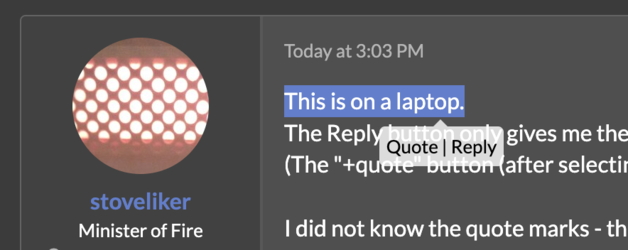Yes, you are right. The Reply icon will quote the full posting. You can delete unwanted parts or...This is on a laptop.
When the desired text is selected, you should see an in-context item like this. You can click on the reply there and it will include the poster's name.

Note that I generally only work from a laptop. Hope that helps.






